St. John's
Houses within 15km of this house
Displaying 102 houses.
Houses within 15km of St. John's
Displaying 102 houses.
| House name | Description | |
|---|---|---|
| Castle Taylor/Ballymagrath | The house at Castle Taylor, originally known as Ballymacrath, was built adjacent to a tower house. The Taylor family had been settled there since the 17th century. In 1837 Lewis recorded it as the seat of Gen. Sir. J. Taylor. In 1894 and 1906 it was the residence of Walter Shawe Taylor and was valued at £50. It is now in ruins. |
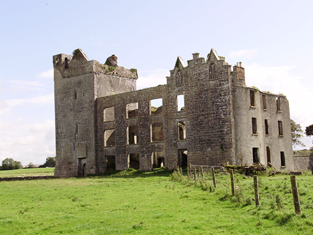
|
| Moyveela Lodge | The original Moyveela Castle was the home of the Browne family before their move to Mount Hazel. In 1786, Wilson writes that Moyveela was the seat of Andrew Browne. At the time of Griffith's Valuation a large portion of the townland was part of the Vandeleur estate and was leased to James Kineen. He occupied a property which later became known as Moyveela Lodge which is still extant. Over 300 acres as well as two caretakers' houses were in the possession of Andrew Browne whose address in the 1870s is still given as Moyveela and Mount Hazel. | |
| Monivea | An O'Kelly tower house, acquired by the ffrenches in the early 17th century, who made additions in the 18th century. Held in fee by Robert French at the time of Griffith's Valuation when it was valued at £40. In 1894 Slater refers to it as the seat of Acheson French. In 1938 it was bequeathed by Kathleen French to the State as a home for artists, subsequently demolished and now only the original tower remains. A mausoleum, modelled on the tower house and constructed at the end of the nineteenth century, is located in the adjacent woodland. |

|
| Ardfry | Lewis mentions the seat of Lord Wallscourt in the parish of Oranmore but refers to it as Wallscourt rather than Ardfry, which is actually located in the parish of Ballynacourty. The Ordnance Survey Name books mention it as Ardfry House, the residence of Lord Wallscourt At the time of Griffith's Valuation it was being leased by the trustees of Lord Wallscourt's estate to Pierce Joyce when it was valued at £60. The house was built in the late 18th century and altered in 1826. The seat of Lord Wallscourt in 1894 and in 1906. It has been in a derelict state since the mid-20th century. In 2006 it was offered for sale as part of a scheme to create luxury apartments in the building. |

|
| Mervue/Merview | Built circa 1777 by the Joyces. In 1786 Wilson refers to a house near Galway as the seat of Dr. "Joice". The house was sold by them to Royal Tara China in 1953. This company occupied the building for over 50 years, closing down at the end of 2003, though the shop premises still operates from this building. A fire badly damaged the original building in 1957. |

|
| Rinville House | Lewis records the house at Rinville as the seat of T.L. Athy in 1837. Earlier in 1814 it was the residence of Phillip Athy. At the time of Griffith's Valuation it was valued at £48 and was occupied by Randal Athy. A second property in the townland of Rinville West was leased by the Athy estate to Patrick Blake. In 1906 Rinville was owned by Edmond J. Athy and was valued at £43. It is now an ivy covered ruin. Part of the demesne lands are a public park maintained by Galway County Council. A gate lodge is still extant but unoccupied. A graveyard for the Oranmore area has been established on part of the demesne lands. |
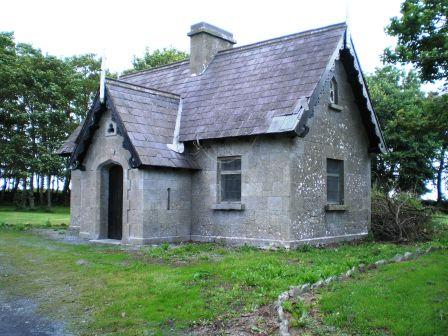
|
| Cottage (Dunkellin) | In 1837 Lewis recorded Cottage as the seat of J. Ryan. Catherine Ryan was leasing the house from Randall Athy at the time of Griffith's Valuation when it was valued at £17. The house at Cottage was part of the Athy estate which was sold in the Encumbered Estates court in July 1857. The new owners, John Edmond Crofton Kelly and Edmond Walker Kelly offered it for sale again in June 1866. At this time the house at Cottage was leased to the representatives of Thomas Redington for 21 years from 1856. By 1906 it was owned by Charles V. Pratt together with 150 acres of untenanted land. The ruins of the house and other buildings are visible at the site. |

|
| Prospect Hill | At the time of Griffith's Valuation the house and buildings at Prospect Hill were in the ownership of Lord Wallscourt's trustees and were valued at £21. Earlier, the Ordnance Survey Field Name Books mention Mr. Dawson of Prospect, as the agent to the Wallscourt estate. There is still a house at the site but it is not the original one. |

|
| Seafield | Seafield House is no longer extant though evidence of walled gardens and out buildings are still visible. It was the residence of Robert Blake in 1814. In 1824 it was the residence of Henry Blake who offered it for letting in the ''Connaught Journal'' in May of that year. The Ordnance Survey Field Name Books noted Seafield as the residence of Mr. Blake's steward. At the time of Griffith's Valuation it was leased by the Blake estate to Matthew Fynn and was valued at £6. | |
| Furzepark House | This house is noted on the 1st editon OS Map as Furze Park House but it may later have been known as Seafort House. The Ordnance Survey Name books describe it as a "bathing lodge, belonging to Mr. J. Smith, Loughrea". It was leased by the Blake estate to Martin Morris at the time of Griffith's Valuation when it was valued at £9. By 1906 the buildings owned by Lord Wallscourt at Treanlaur were valued at almost £2. Substantial ruins of this house are still visible. |

|
| Ballynamanagh | At the time of Griffith's Valuation, Thomas Redington was leasing a house valued at £4 at Ballynamanagh, barony of Dunkellin, to John Caven. It was accompanied by almost 100 acres. Kelly noted that it had been the property of Mr.Burke of Carheen for over 100 years but was later in the possession of the Redington estate. This house is still extant and occupied. |
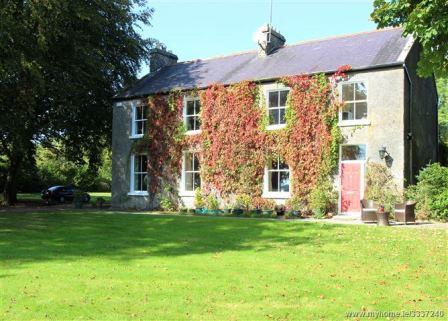
|
| Cregaclare | The Ordnance Survey Name Books mention that Cregaclare House was built in 1802. In the 1830s it is described as having elegant gardens and a Hot House producing various types of fruit. Cregaclare House is recorded by Lewis as the seat of J.S. Lambert in 1837. At the time of Griffith's Valuation it was leased by James Lambert to Lord Clanmorris and was valued at £50. Bought by Lord Clanmorris in the late 1850s, it was still his property in 1894 and 1906. Only the ruins of a basement and remains of stable yard and gateways are visible. Mausoleum located at M470118 in the ruins of old RC church. This was originally a burial place for the Bingham family (Lords Clanmorris) but those buried there were later re-interred in the grounds of the Church of Ireland, Ardrahan. |
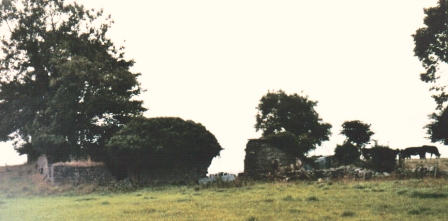
|
| Aggard | In 1786 Wilson refers to Aggard as the seat of Mr. Lambert. In 1837 Lewis recorded Aggard as the seat of J. Lambert. The property at Aggard was being leased by the Lambert family from Reverend Thomas Kelly, at the time of Griffith's Valuation. Reverend Kelly's estate, including Aggard, was offered for sale in the Encumbered Estates court in February 1857. In 1894 the seat of J.W.H. Lambert. Aggard House is still extant and occupied. |
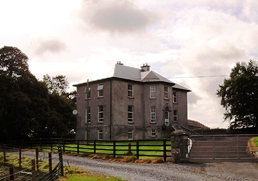
|
| Ballymore | Wilson mentions the seat of Mr. Rathbourne near Craughwell in 1786 though he does not name the house. In 1837 Lewis recorded Ballymore as the seat of R. Rathbourne, who continued to reside there until the 1880s. Griffith's Valuation shows that Richard Rathbourne held it from the Clanricarde estate. This may be the house noted by Slater as part of Lord Clanmorris's estate in 1894. Ballymore is still extant and occupied together with an extensive range of outbuildings. |
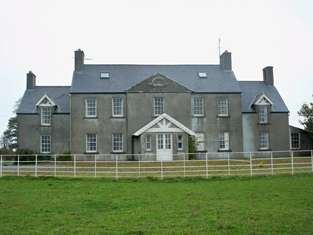
|
| Tyrone | Tyrone was built in the early 19th century. It is described in the OS Name Books as "a beautiful residence" in the 1830s. At the time of Griffith's Valuation, it was in the possession of Christopher St.George and was valued at £50. In 1894 Slater notes it as the seat of Robert J.K. St.George. The family ceased to live there in the early twentieth century. Its ruins can be seen overlooking the estuary of the Clarin river. |

|
| Moyode | The seat of the Persse estate for many years. At the time of Griffith's Valuation it was the seat of Burton Persse. In 1894 Slater refers to it as the seat of De Brugh Persse. In 1906 it was owned by Lord Ardilaun and was valued at almost £73.Only some ruins of Moyode Castle remain although elements of the stable yard still exist. |

|
| Kilcolgan Castle | Christopher St. George, residing at Kilcolgan Castle, is described as a resident proprietor in county Galway in 1824. In the 1830s Kilcolgan Castle is described as the property of A.F. St. George. This house, part of the St.George estate, was leased by Matthew St.George from Christopher St.George, 1855. At that time Matthew St. George was acting as agent for the Rathbourne estate. Earlier, the Ordnance Survey Field Name books record that he was acting as agent for the estate of Patrick French in the nearby parish of Ballynacourty. In 1894 Slater refers to "Kilcolgan House" as the residence of James St. George. |

|
| Newtown Kilcolgan | Arthur St.George was leasing a house, valued at £8, at Newtown Kilcolgan, from Christopher St.George in 1855. Evidence of estate buildings still survive in this area though the house appears to be gone. | |
| Kilcornan | In 1814 Kilcornan House was the residence of T. & C. Redington. Later, in 1837, Lewis recorded it as the seat of T. Redington. At the time of Griffith's Valuation Thomas Redington was the owner of the property, then valued at £100. In 1894 Slater referred to it as the residence of C.T. Redington. In 1906 it was the property of Anne Redington. Kilcornan House is still standing and now forms part of the Brothers of Charity services complex located in the grounds. |

|
| Hollypark | In 1814 Hollypark was the seat of Pierce Blake and at the time of Griffith's Valuation the property of Peter Blake when it was valued at £20. In 1894, Slater referred to it as the seat of Col. M.P. Blake. In 1906 Maria C. White held the mansion house at Hollypark. It is still extant and occupied. |
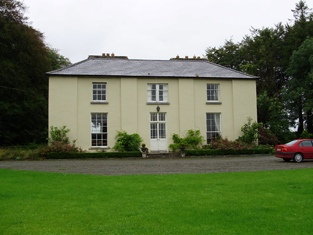
|
| Bookeen Glebe | Burton Persse was leasing this house to Rev. Robert Graham at the time of Griffith's Valuation. In the nineteenth century, the house was used as the residence of the incumbent at Bookeen Church. It was later purchased by the Aitken family who had served as Land Agents for the Clancarty estate at Coorheen, outside Loughrea. The house has been renovated and is extant and occupied. |

|
| Dunsandle | A large house built in the later 18th century for Denis Daly, M.P. Wilson refers to it in 1786 as "the most magnificent and beautiful seat, with ample demesnes". It was held in fee by Lord Dunsandle at the time of Griffith's Valuation, when it was valued at £70. In 1894 Slater refers to it as the seat of William Daly. Dunsandle House was sold in 1954 and demolished in 1958 although portions of the walls are still standing. Evidence of both the stable yard and walled garden still exists also. |
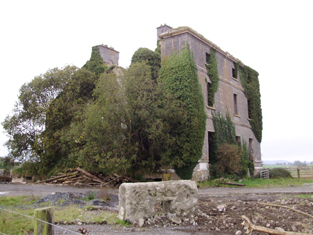
|
| Lavally | Wilson refes to Lavally as the seat of Mr. Lynch in 1786. In 1837 Lavally is recorded by Lewis as the seat of T. Lynch. It was still occupied by him at the time of Griffith's Valuation in 1856 when it was valued at £20. By 1906 Delia Mullin is recorded as the owner. Lavally House is still extant and undergoing renovation. |
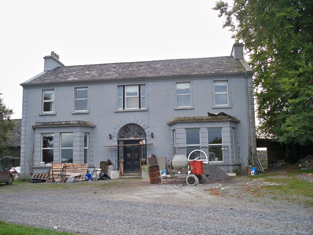
|
| Rahasane | In 1786 Wilson refers to Rahasane as the seat of Mr. French. Lewis records Rahasane as the seat of R.French in 1837. Held in fee by Thomas A. Joyce at the time of Griffith's Valuation when it was valued at £45. The Landed Estates court sale notice of June 1871 mentions that Rahasane House was built by Robert Joseph Ffrench at a cost of £10,000. This, the original Rahasane House , is described as " in ruins" on the 25-inch Ordnance Survey map of the 1890s. A later Rahasane House is shown on the 1933 ediiton of the six-inch Ordnance Survey map, located in Pollnagerragh West townland, (M474172). While there is no trace now of the original house built by R.J. French, some estate architecture survives. |
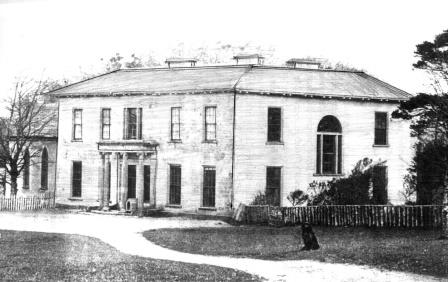
|
| Cloghballymore | Originally a tower house owned by the Kilkelly family, Cloghballymore House, was extended a number of times by the various families who held the estate over three centuries.. The National Inventory of Architectural Heritage indicates that the main house at the site was constructed by Marcus Lynch in the eighteenth century. In 1906 it was owned by Llewellyn Blake and was valued at £18. It was later given by him to a missionary order and maintained for some time as a seminary. The building is still extant and now used as St. Columba's nursing home. |
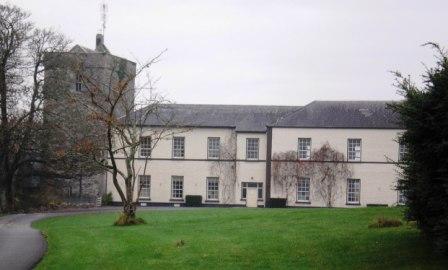
|
| Rockfield House | Melvin states that throughout the 18th and 19th centuries the house at Rockfield was occupied by Burkes, Brownes, Blakes and Concanons. At the time of Griffith's Valuation it was occupied by Patrick J. Blake and was valued at £26. In 1837 Lewis recorded it as the home of M. Browne. Wilson, writing in 1786, refers to it as the seat of Michael Browne. In 1906 it was owned by Richard A. Nugent when it was valued at £27. The Encumbered and Landed Estates Court sale notices give the impression that the house was sometimes known as Rockville. Though the house no longer survives the gate lodges are still occupied. |

|
| Stoneleigh | The house in Laghtphillip townland, part of the Lynch estate, was leased to James Stanley in 1855. In 1906 the house was owned by Hugh Greaney and was valued at almost £7. The house is still standing but derelict. A new house exists on the site and "Stoneleigh House" appears at the entrance gate. Writing in 1976, Kelly noted that the house was built by the Stanley family due to its salubrious site. |

|
| Stradbally | Griffith's Valuation shows that Christopher St.George had what are described as "offices" valued at £16 in the townland of Stradbally West, parish of Stradbally, barony of Dunkellin. This was the stable complex for Tyrone House and adjacent to the walled garden which was part of the estate. |

|
| Monksfield | The house at Monksfield had originally belonged to the Morgan family who were of Welsh origin. Evidence from the 17th century records shows that they acquired land in this area in the later 17th century. In 1837 Lewis recorded Monksfield as the seat of Capt. Morgan. It had to be sold in the mid-19th century due to debts. By the 1850s it was the residence of Thomas Shawe-Taylor.In 1906 it was owned by Walter Shawe Taylor and was valued at £14. Kelly, writing in 1976, indicated that the estate was sold to the tenants around 1908. After the estate was divided, the house continued to be occupied well into the twentieth century but is now a ruin surrounded by farmland. |
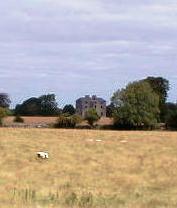
|
| Lambert Lodge (Kilquain) | In the 1830s Kilquain was described as "Proprietor J. W. H. ambert, Esqr., Aggard. No agent. This townland is farmed by Carbit Lambert, Esqr. Proprietor's brother, and on which is built a superb house and offices under a bulk rent of £200 per year. There is a garden and orchard and an interesting demesne". In 1855 the Lambert house at Kilquain was occupied by Cuthbert Lambert leasing from John Lambert. It is still extant and occupied. |
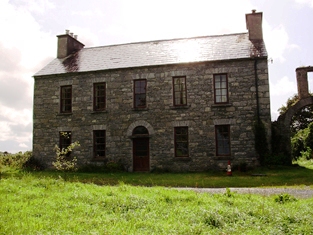
|
| St. Cleran's or Issercleran | Issercleran or St.Clerans was the home of the Burke family who built the house c.1784. At the time of Griffith's Valuation it was owned by John Hardiman Burke and was valued at £45. In 1906 it was the property of Anne Maxwell (nee Burke) and was valued at £46. It was sold in the 1950s and became the home of film director, John Huston. Up until 2008 it functioned as a luxury hotel owned by the Griffin Group. |

|
| Gammahoe Cottage | A smaller property on the Persse estate, possibly a steward's house, with 257 acres in 1855. There is no trace of a house at this location now although there is some evidence of farm buildings and garden walls. | |
| Derryhoyle | In 1855 the house at Derryhoylemore, parish of Lickerrig, barony of Dunkellin, was leased by Robert O'Hara to Samuel Wade. In 1906 the house at Derryhoyle was valued at £12 and was owned by Robert F. O'Hara who also owned over 100 acres of untenanted land there. A house is still extant at the site. |

|
| Woodville House | Woodville House is described as "a gentleman's seat, having fine premises and a good deal of woodland attached" in the 1830s. Robert Darcy, who acted as a land agent, was leasing this house from the Clanricarde estate in 1855. In 1906 it was valued at £26. It is still extant and occupied. The walled garden has also been restored and is open to visitors at certain time. See woodvillewalledgarden.com. |

|
| Ballynahivnia | Lord Dunsandle is recorded as the lessor of 161 acres and a complex of buildings, including a mill, valued at £18, in the townland of Ballynahivnia, in 1855. The substantial remains of a tower house, together with the foundations of the mill building remain at the site, close to Riverville Bridge. |

|
| Castle Ellen | Castle Ellen was built in 1810. It is described as the property of Captain Lambert in the Ordnance Survey Name Books. At the time of Griffith's Valuation it was owned by Walter Lambert and was valued at £21. In 1906 it was owned by the representatives of Peter F. Lambert at which time it was valued at £35. It is still extant and occupied. For more information see www.castleellen.com. For more information on the genealogy of the Lambert family see http://www.familylambert.net/History/index.htm |

|
| Merlin Park | A house on the outskirts of Galway, built by Charles Blake in the first decade of the 19th century. Bought by Henry Hodgson in the Encumbered Estates' Court in 1852. It was held in fee by him at the time of Griffith's Valuation and valued at £65. Merlin Park was purchased by the Waithman family in 1876 and in their ownership until 1945. Thereafter it was compulsorily acquired for the building of a TB sanitorium. The house no longer exists and Merlin Park Hospital now occupies the site. |

|
| Tooloobaun House | At the time of Griffith's Valuation, Henry Hudson was leasing this house, then valued at almost £4, from John R. Hudson/Hodson. It is not shown on the later 25-inch Ordnance Survey map of the 1890s. | |
| Mount Browne | The home of the Cullinane family for about the last 200 years and still occupied by them. The house is reputed to be about 300 years old and was undergoing renovation in 2007. The outbuildings are well maintained. |
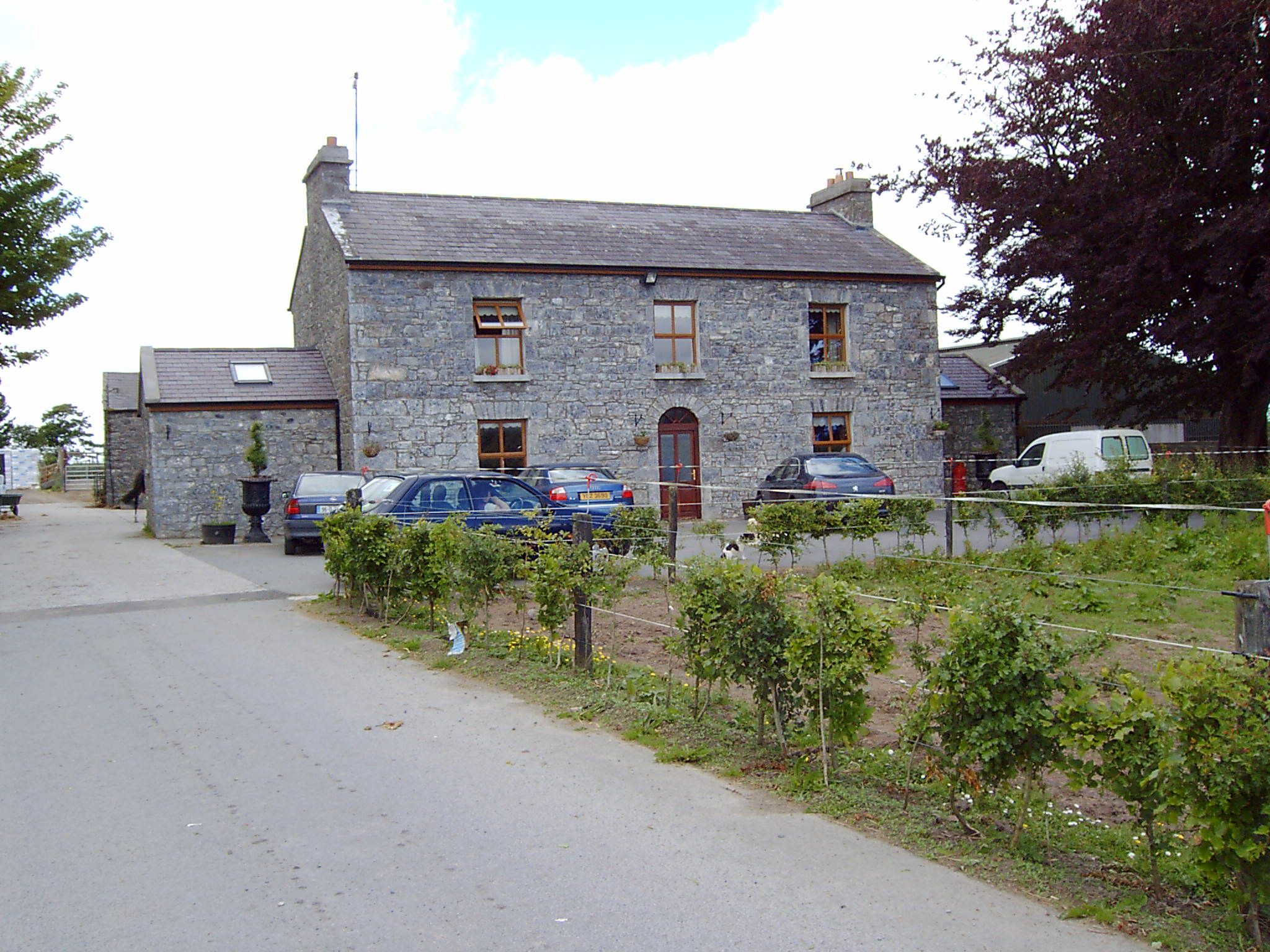
|
| Derrymaclaughna | A house appears to be located near the castle on the first Ordnance Survey map of 1838. The Ordnance Survey Name Books mention the ruins of a castle, a mansion house and a chapel in the townland. The property belonged to the Burke family in the 18th century as Wilson noted it as the seat of Mr. Burke in 1786. It became the residence of Thomas P. O'Flahertie of the Lemonfield family in the early 19th century. He was married to a daughter of Ulick Burke of Derrymaclaughna. At the time of Griffith's Valuation it was occupied by Thomas Cullinane who held it from James Browne. Derrymaclaughna was the residence of Alan Parker Close in the 1870s. In November 1887, Richard Rowland was offering for sale a quarter share of the lands at Errew, county Mayo, as well as lands at Derrymacloughna, barony of Clare, county Galway, in the Land Judges' Court. However, due to absence of bidding, the sale was adjourned. |

|
| Baunmore | Held in fee by Richard Kirwan at the time of Griffith's Valuation when it was valued at £7. The house was extended and enlarged towards the end of the nineteenth century. It as well as yard buildings, gates and walls still remain. |

|
| Murroogh House | Part of the Blake estate at Merlin Park. Built by James Henry Ryan in the 1860s who spent nearly £5,000 on the property and occupied in the 1880s by the Bishop of Galway. Owned by the newspaper magnate William Randolph Hearst in the 1930s and bought by the Galway Mayo Institute of Technology in 2003. |
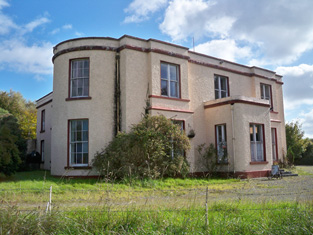
|
| Castle Lambert | Castle Lambert was built in the later 18th century. At the time of Griffith's Valuation it was owned by Walter Lambert and was valued at £20. It is no longer extant, only the bell tower in the yard remains. |

|
| Moor Park | Occupied by Giles Eyre Lambert at the time of Griffith's Valuation when he was leasing it from Walter Lambert. It was valued at £20. Later the seat of Frank Shawe Taylor who was assassinated nearby in 1920. There is still a large house at Moor Park though the National Inventory of Architectural Heritage indicates that this is not the original house. |
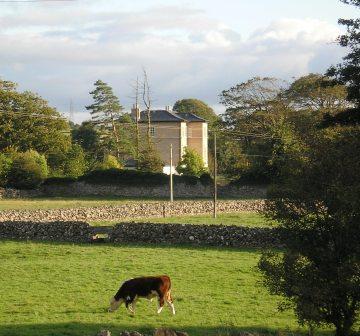
|
| Waterdale | This was originally a Staunton property which passed by marriage to the Lamberts. In 1786 Wilson refers to it as the seat of Mr. Staunton. The OS Name Books record it as the property of James Blake in the 1830s. Sold to Lord Clanmorris briefly in the 1850s and repurchased by James Staunton Lambert, Waterdale was leased to John Wilson Lynch 1857-1870 and to James Delahunt 1870-1883. It was taken over by the Land Commission in 1903 and demolished. |

|
| Newford | In 1786, Wilson mentions Newford as the seat of Edward Browne. In 1814 Thomas Tighe is recorded as residing at Newford. Patrick Fitzpatrick of Newford House, Athenry is listed as a subscriber to ''Lewis' Topographical Dictionary'' (1837). The house was later part of the Whaley and Perry estates in the 1850s and was offered for sale in the Encumbered Estates court in 1852. Portion of Newford later bacame incorporated into Mellows Agricultural College farm. The house is no longer extant. | |
| Prospect | Prospect Lodge is recorded as the residence of T. Burke in 1814. At the time of Griffith's Valuation it was leased by Thomas Courtney to John Lopdell. It is still extant and occupied. |
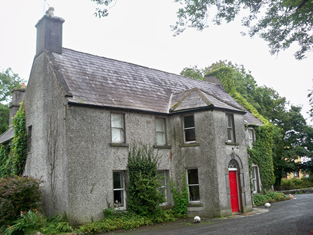
|
| Castleturvin | Francis Bruen was leasing Castleturvin to Reverend Mark Perrin at the time of Griffith's Valuation. The Ordnance Survey Name Books claim that the Turvin family were the proprietors in the 1830s. Castleturvin House is still extant and occupied. The entrance gate indicates that the house dates from 1767. |

|
| Cullairbaun | Occupied by James Perry at the time of Griffith's Valuation. | |
| Athenry House | Athenry House was built in the late 18th century. In 1837 it was the seat of J. Lopdell. It was offered for sale in the Landed Estates court in November 1876 as part of the estate of Wm. Vesey Fitzgerald Hickman. Part of the original house is no longer extant and construction work has taken place in the area. |
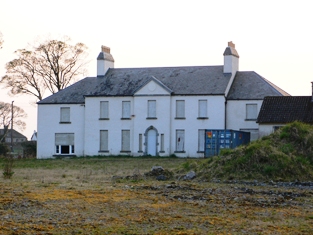
|
| Willmount | Willmount House leased by Thomas Mahon from William Smith at the time of Griffith's Valuation when it was valued at £10. In the 1870s Henry Morgan, who owned over 200 acres in county Galway, was residing at Willmount. In 1906 it was the property of John McCoy. The original house appears not to have survived though there is evidence of a farm yard and walled garden close to Willmount Graveyard. Extensive modern farm buildings exist on the site. | |
| Rathville | At the time of Griffith's Valuation, John Blake was the holder of a property at Carrowreagh, barony of Athenry, valued at £10. Rathville House is still extant and occupied. In 2013 it was offered for sale. |

|
| Raford | The National Inventory of Architectural Heritage suggests that Raford House was built c.1760. Wilson refers to it as the seat of Captain Daly in 1786. It was being leased by Denis Bodkin from Harriett Daly at the time of Griffith's Valuation, when it was valued at £40. John Archer Daly was the owner of Raford House in 1906 when it was also valued at £40. Raford is still extant and occupied. Modern development has taken place on part of the demesne lands. |

|
| Turoe | Wilson refers to "Tourow" as the seat of Mr. Dolpin in 1786. Oliver Dolphin owned Turoe at the time of Griffith's Valuation when it was valued at £20. Slater refers to it as the seat of Miss Dolphin in 1894. In 1906 the mansion at Turoe was the property of Hubert Dolphin and was valued at £16. The original house is no longer extant but evidence of the stable yard and walled garden can be seen at the site, close to Turoe Pet Farm. |
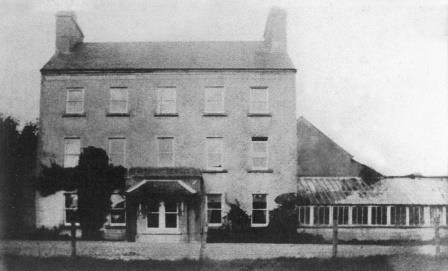
|
| Rockwood | John Galway is recorded as the owner of Rockwood at the time of Griffith's Valuation when it was valued at £20. In 1906 Rockwood House was owned by Robert W. Holmes and valued at £20. It was occupied by the Holmes family until after WWI. It was later the property of the Fox family. It was restored in the mid-1980s and is now extant and occupied. |

|
| Rocklawn | The OS Name Books give the name of this house as Rockland and state that it was the residence of the Browne family though they claim that the townland of Pollaghrevagh was the property of Lord Clanmorris. At the time of Griffith's Valuation it was occupied by James French and was valued at £12. By 1906 it was owned by Richard French. Rocklawn House is no longer extant. It is described as "in ruins" on the 1933 printing of the 6" OS sheet for Galway. |

|
| Carnmore | The OS Name Books record Mr. Blake of county Mayo as the proprietor of Carnmore in the 1830s. At the time of Griffith's Valuation Valentine O'Connor Blake was leasing a house valued at £4 and over 100 acres to Arthur Veitch. Some ruins remain at the site. | |
| Lydacan | Lydacan or Lydican Castle was a residence of the Lynch family in the 1770s. The OS Name Books record the "substantial residence of Mr. Gunning" in Lydacan in the 1830s. Lydacan Castle was purchased by Martin O'Flaherty in the mid-19th century and was subsequently sold by him to James Greated. It was burnt in 1922 and the ruins remain. |

|
| Thornpark | At the time of Griffith's Valuation the property at Carrowmoneash, parish of Oranmore, was leased by the representatives of H. Butler to Anne Butler/K.H. Blake. Burke's Landed Gentry (1958) states that Xaverius Henry Blake Butler purchased Thornpark, part of his mother's dowry, in the Landed Estates' Court in April 1860. Sir Henry Blackall states that Xaverius Blake Butler bought Mount Vernon, which he renamed Thornpark, from his nephew Henry.By 1906 the house at Carrowmoneash was owned by James Blake Butler and was valued at £26. Thornpark House is now the Oranmore Lodge Hotel. See www.oranmorelodge.ie for more information. |

|
| Frenchfort | Frenchfort became a Blake property in 1780 when Michael Blake married Anne Ffrench of Frenchfort. Wilson mentions the house as his seat in 1786. He is described as a resident proprietor in 1824. At the time of Griffith's Valuation the house at Frenchfort in the parish of Oranmore was occupied by his grandson, Theobald Blake. The original house does not appear to be present now but the walled garden layout is still visible. |
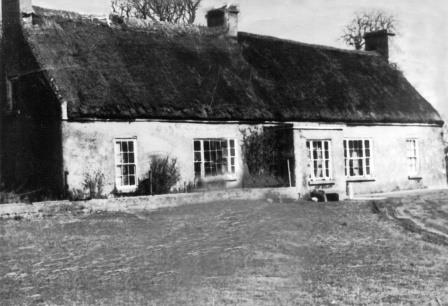
|
| Oranbeg | At the time of Griffith's Valuation the property at Oranbeg was leased by the Fitzgerald Vesey estate to George Hill and valued at £8. It is labelled Vesey Lodge on the 25-inch Ordnance Survey map of the 1890s. It is no longer extant. | |
| Rocklands (Oranmore) | Rocklands was occupied by George Ingham in the 1850s when it was valued at £13. In 1906 it is recorded as the property of Isabella Ussher and was still valued at £13. The house is still extant and occupied. |
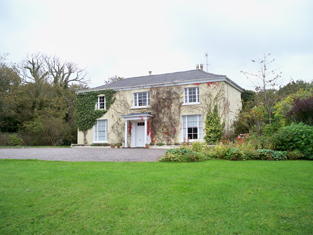
|
| Oran Castle | In 1786 Wilson mentions Oranmore as the seat of Denis Blake. In 1814 and again in 1837 Oranmore Castle is recorded as the seat of Walter Blake. At the time of Griffith's Valuation he was leasing a property, valued at £10, in Oranmore townland, to Martin Grady. Pádraig Lane writes that Walter Blake sold Oran Castle to James Dillon Meldon. The castle was refurbished by the King family in the twentieth century. |

|
| Rockmore or Blakeland Lodge | . This property is named as Blakeland Lodge on the 1st edition OS Map and in the Ordnance Survey Name Books.It appears as Rockmore on the 25-inch map of the 1890s. At the time of Griffith's Valuation it was occupied by William Kelly and valued at £15. In 1906 it was the property of Raymond Kelly and was still valued at £15. It is still extant and has recently been renovated. |
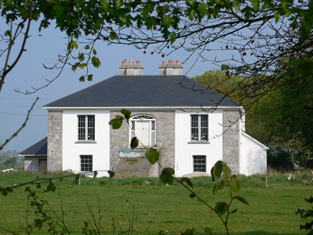
|
| Tallyho Lodge | Tallyho Lodge was the home of Burton Persse, Sen, in the 19th century. The house is no longer extant but traces of the walled garden remain. |

|
| Crumlin | Built in 1844, the original house was held in fee by Peter Blake and valued at 7 at the time of Griffith's Valuation. It was later altered and extended by Cecil Henry in the style of a French chateau. The house was sold to the Land Commission in 1913 and to John Costello in 1917, whose grandson renovated it and the courtyard in the early 1990s. |
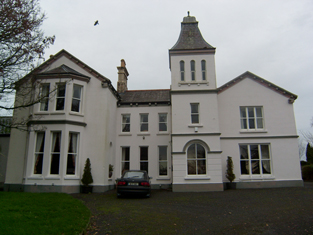
|
| Killimer Castle | Originally a tower house, Killimor Castle was modernised in the early 1700s by the addition of two slated wings. The Dalys continued to reside there until the end of the 18th century when the castle and demesne were leased to Dominick Burke of Slatefield. In 1837 Lewis records it as the seat of Hyacinth Burke. Dominick J. Burke was still leasing the house at Killimor from Rev. Nicholas Devereux at the time of Griffith's Valuation. It was then valued at £16. The house at Killimordaly had fallen into disrepair but has been restored. |

|
| Corrandoo House | This property was granted to the ffrenches in the late 17th century in lieu of Monivea Occupied by the Reverend Mr Marsh in the 1770s sand 1780s, by M. Dowdall in the 1830s and Thomas Kenny at the time of Griffith's Valuation when it was valued at £10. It is no longer extant. |

|
| Glennagloughaun North | A building valued at £12 was occupied by Digby French at the time of Griffith's Valuation, this may have been the old charter school marked on the first Ordnance Survey map. The latter building appears to have fallen into disuse by the 1890s and the site is now occupied by a farm supply stores. | |
| Killaclogher House/Spring Park | This property is labelled Spring Park on the First edition Ordnance Survey map and as Killaclogher House on the 25-inch edition of the 1890s. It was the main home of the Kenney family in the 18th and 19th centuries. At the time of Griffith's Valuation it was valued at over £16 and held in fee by James C. Kenny. The house is no longer extant. |

|
| Ryehill | Ryehill House was built in the early part of the 19th century and was still occupied in 1906 by a member of the Roche family. Unroofed in the mid 1950s only the impressive gateway and yard buildings still remain. |

|
| Belleville | Built in the late 18th and early 19th century. Belleville was held in fee by Thomas Mahon at the time of Griffith's Valuation when it was valued at £30. The only part of the house remaining is the tower. |
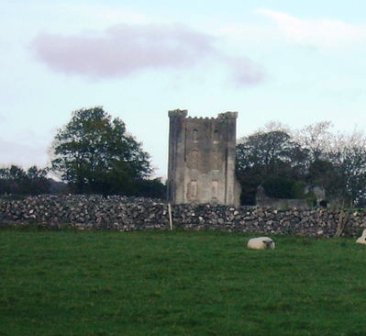
|
| Bingarra | Occupied by James Clarke in the mid 1850s, leasing from the Bodkin estate and advertised for sale in Nov 1855. Modern buildings exist at the site now. | |
| Temple | This property is labelled Temple House on the 25-inch Ordnance Survey map having been built after the publicaiton of the 1st edition maps. In the 1850s William Poole was leasing the property from the Graves estate when the buildings were valued at £10. Substantial ruins still exist at the site. |

|
| Attymon House | At the time of Griffith's Valuation this house was occupied by Mary Broderick, who later married Lord Dunsandle. It was then valued at £8. In 2008 the current house at this site was offered for sale. The sale details state that it was originally built as a hunting lodge but later extended. See Irish Times 22 May 2008. |

|
| Tiaquin | At the time of the Burke sale in 1851 the house was described as an 'old fashioned cottage style' type of building. A gable end of the house still stands with the nearby farm buildings still in use. |

|
| Knockbrack | A house built in the early 1850s by the Hall family and occupied by them until 1922. In 1906 it was valued at £36. The roof of the house was later removed. Only the outline of the basement walls now remain. The farmyard buildings are still used by the Feeney family. |

|
| Kilskeagh | Leet's Directory records Dominick Browne of Kilskeagh in 1814 and a small house is marked on the 1838 Ordnance Survey map. By the time of Griffith's Valuation only a herd's house valued at 10 shillings is recorded. | |
| Carnakelly | Carnakelly was the original house from whch the Dalys of Dunsandle descended. John Monaghan was leasing this house, valued at £4 together with over 100 acres, from Lord Dunsandle's estate, at the time of Griffith's Valuation. |

|
| Graig Abbey | At the time of Griffith's Valuation, James Clarke was leasing the house at Graig Abbey from the Warburton estate when it was valued at £18. It is still extant and in use. |
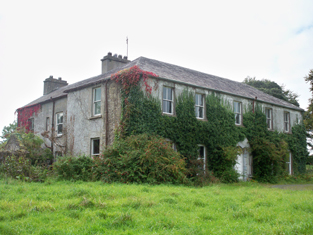
|
| Coolaran | Sometimes spelt Coolarne. At the time of Griffith's Valuation, the Meldon estate owned a herd's house at Coolarne. Later the property became a convent of the Sisters of the Sacred Heart. It is now an addiction treatment centre. |
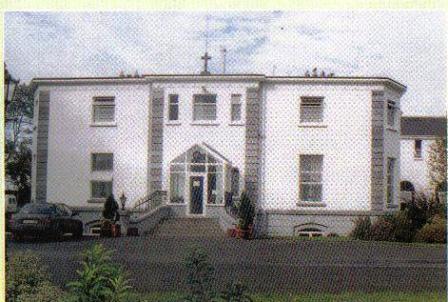
|
| St. Michael's/ Moneyteige | The house at St. Michael's is described in the Landed Estates court notice in April 1885 as "a handsome modern residence which cost £2000 to build". At the time of Griffith's Valuation, Edmund Davies held the townland of Moneyteige including a house valued at £2. Writing in 1976, Kelly noted that the house was built by a doctor named Davis, who bought the townland from the Lamberts of Castle Ellen. Part of the building is now roofless. | |
| Kiltullagh House | In 1786 Wilson mentions "Kiltolla" as the seat of Patrick D'Arcy. Lewis records Kiltullagh House as the seat of J. D'Arcy in 1837. At the time of Griffith's Valuation, Pierce Joyce held a herd's house here valued at almost £4. It is described as "in ruins" on the 25-inch Ordnance Survey map of the 1890s and these ruins are still extant. |

|
| Cloonacauneen Castle | Muriel L. Athy writes that the castle was occupied by Martin Blake in 1835, although it is recorded in the Ordnance Survey Name Books as the property of Mr. French. The property later passed into the hands of Mr Fair "who built against it a Tudor house", his descendant Dr Fair of Ballinasloe sold it to the Estates Commissioners". Owned by James Malley in the early 20th century. Described by Bence Jones as a tower house with an attached wing. Still occupied, it now operates as a bar and restaurant. |

|
| Rockhill House | The earlier house at Rockhill was the residence of Daniel Higgins in 1814. At the time of Griffith's Valuation, it was occupied by Dominick D'Arcy and was valued at £9. A new house appears to have been built in the latter half of the nineteenth century and, in the 1870s, it was the seat of Lionel D'Arcy. Rockhill is stil extand and well-maintained. |
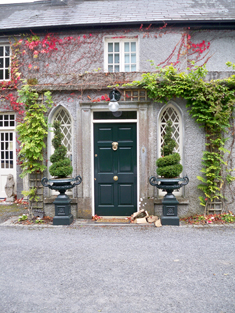
|
| Raheen (Athenry) | Raheen House is associated wth the Lopdell family although there was only a herd's house valued at £3 and gate lodges recorded there at the time of Griffith's Valuation. In 1894, however, Slater noted it as the residence of Mrs. Lopdell. Raheen is still extant. |
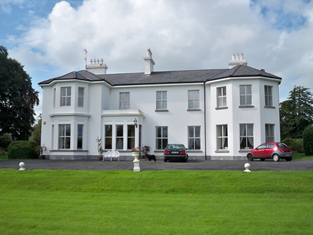
|
| Carrowroe House | In 1786, Wilson refers to "Carrorowe, at present uninhabited". At the time of Griffith's Valuation, John Dennis was leasing a property at Carrowroe North, barony of Athenry, valued at £15, from Lord Dunsandle's estate. Buildings remain at the site. |

|
| Rinville Lodge | At the time of Griffith's Valuation, Patrick Blake was leasing a house valued at £12 at Rinville West, barony of Dunkellin, from Randal Athy. This appears to be the house known as Rinville Lodge on the first edition Ordnance Survey map. By the 1890s it had become known as Bay View the name by which it is still known. |

|
| Killeen House & Killeen Castle (Oranmore) | In 1814 Killeen Castle is recorded as the home of Marcus Blake. By the time of Griffith's Valuation it was used by the Cullinane family who lived at Killeen House nearby. The latter property was valued at £10 at the time of Griffith's Valuation. The castle and its adjacent buildings afterwards fell into ruin but was restored in the later twentieth century and is now occupied once again. Killeen House was demolished in the twentieth century. | |
| Boyhill House | Richard Persse was leasing a house valued at £5 from Burton Persse at Boyhill, barony of Athenry at the time of Griffith's Valuation. In 1906 it was still the property of Burton Persse who also held almost 300 acres of untenanted land in the locality. Some ruins and farm buildings still remain at the site. | |
| Gloves (Athenry) | The Ordnance Survey Name Books record Gloves as the residence of Mr. Browne in the 1830s. At the time of Griffith's Valuation Mark Loughnane held the townland of Gloves Middle, barony of Athenry including buildings valued at almost £8. By 1906 Michael J. Monaghan was the owner of this property. Buildings are still extant at the site. | |
| Gortakeeran | John A. Daly owned buildings valued at almost £8 at Gortakeeran in 1906. At the time of Griffith's Valuation this townland was owned by John B. Daly including a herd's house valued at 15s. | |
| Abberanville | Abberanville House is descibed as "in ruins" on the 1st edition OS map. The townland, containing 24 acres, was part of John B. Daly's estate and was leased to John Blake when the buildings were valued at £15s. The ruins of a hemp factory were located nearby. There are no buildings at the site now. | |
| Mulpit House | Mulpit House is shown on the first edition Ordnance Survey map, published in 1842. At the time of Griffith's Valuation, it was being leased from Francis Bruen by Walter Taylor and was valued at £8 10s. The property included a corn mill though this is noted as "in ruins" on the Ordnance Survey map. Mulpit House is still extant and occupied. |
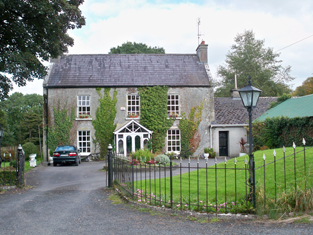
|
| Carrigeen House | At the time of Griffith's Valuation, Carrigeen House was leased by John Connolly from the Joyce estate when it was valued at £5. It is labelled "in ruins" on the 25-inch map of the 1890s. | |
| Esker | In 1786 Wilson refers to Esker as the seat of Mr. Daly, "situated on a lofty hill". By the time of Griffith's Valuation this property was being leased to the Dominican Order by Lord Dunsandle, when it was valued at £20. The Dominicans departed in the 1860s and it became for some time a seminary for the RC diocese of Clonfert. It was taken over by the Redemptorist Order in 1901, in whose possession it still remains. It now serves as a retreat centre. |
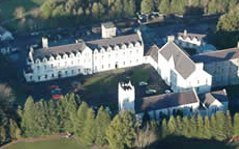
|
| Park | In 1786 Wilson refers to Park as the seat of Mr. Burke, half a mile from the Monivea-Galway road. This may refer to Park townland in the barony of Athenry, which was in the possession of James Perry at the time of Griffith's Valuation. | |
| Cossaun or Cussane | In 1786 Wilson refers to Cussane as the seat of Mr. Parker. By the time of the 1st Ordnance Survey the house in Cossaun townland is described as "in ruins". The townland was in the possession of the Mahons of Belleville by the time of Griffith's Valuation in the 1850s. | |
| Ballymanagh (Dunkellin) | In 1786 Wilson writes that Ballymanagh was the seat of Mr. Burke. Ballymanagh House is shown on both the 1st and 25-inch edition Ordnance Survey maps. At the time of Griffith's Valuation it was leased by James Burke from the Redington estate when the house was valued at almost £2. A house is still extant at the site. | |
| Claregalway Castle | In 1786 Wilson refers to "the ancient castle of Clare-Galway, the seat of Michael French". Both the 1st edition and 25-inch edition indicate that the original tower house was in ruins but extensive adjacent buildings are shown on the 25-inch map. At the time of Griffith's Valuation, it was part of Lord Clanmorris's estate and was leased to Patrick Reilly when the buildings were valued at over £5. The castle is still extant and undergoing a programme of renovation. | |
| Corbally House (Kilmoylan) | In 1786 Wilson refers to Corbally, the seat of Mr. D'Arcy, situated beside a lough. This would appear to be Corbally House, in the parish of Kilmoylan. By the time of Griffith's Valuation, the townland was in the possession of James O'Hara and Walter Blake was occupying this property which was valued at £2. It is no longer extant. | |
| Carheen House | At the time of Griffith's Valuation Carheen was occupied by James Bourke, leasing from Peter Blake. The house was valued at £3. Carheen is still extant and in use. |
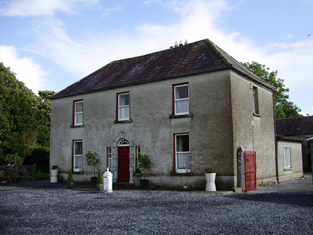
|

